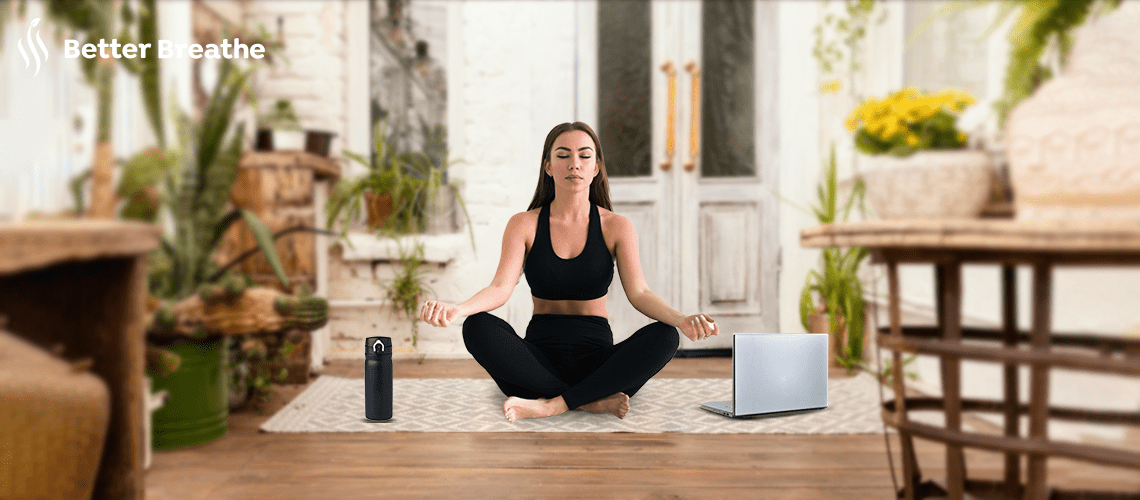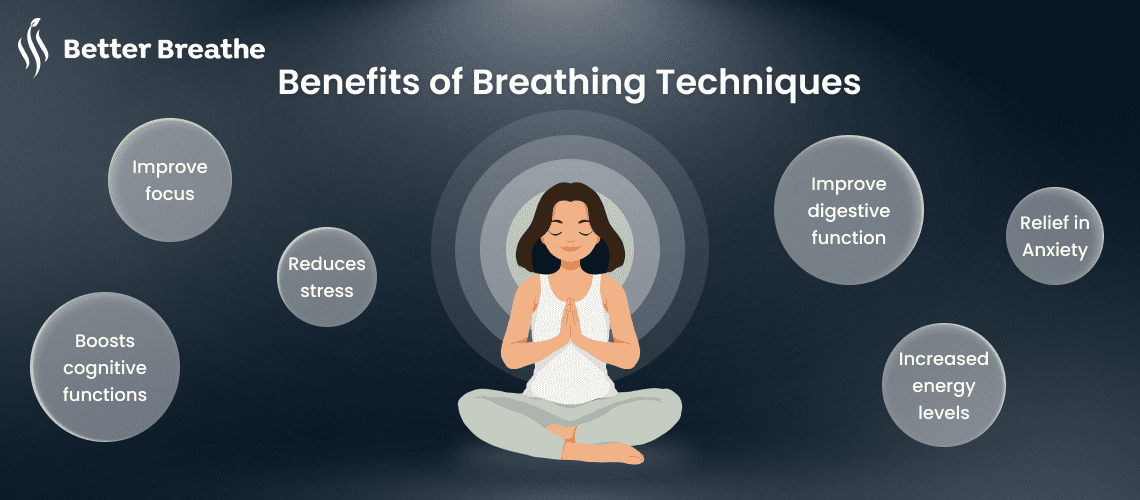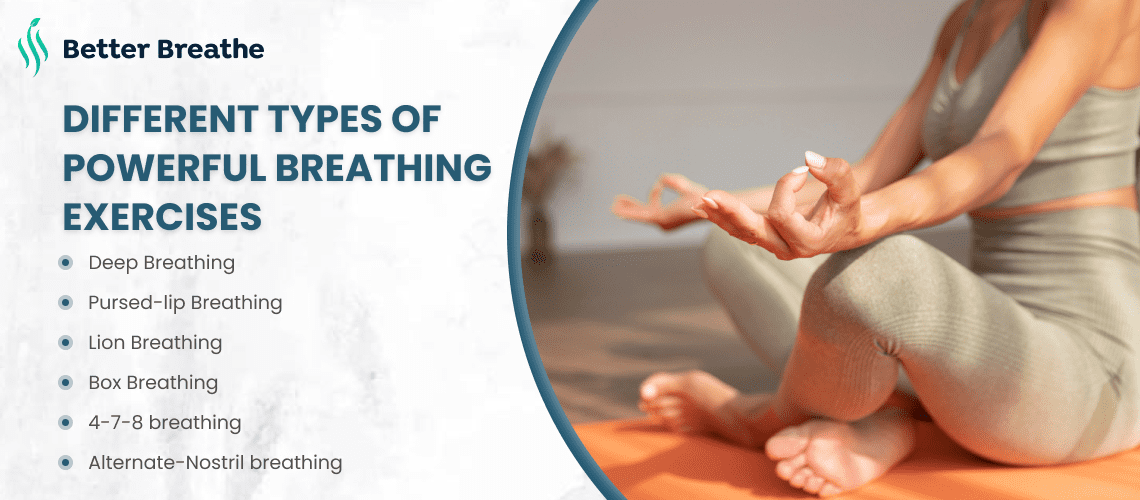
Box breathing you breathe in a specific pattern to relax. It is also known as square breathing or four-square breathing. A breath cycle consists of inhaling, holding, exhaling, and then holding the breath again for equal durations. Yoga, meditation, and mindfulness training all use this method. Box breathing offers a range of benefits to both physical and mental health.
Box breathing can also improve mental clarity, focus, and concentration. Synchronizing the breath with specific counts cultivates mindfulness and awareness, sharpening cognitive abilities, and improving attentiveness and presence. This heightened focus may prove beneficial when studying, working, or engaging in creative activities that require sustained attention.
The benefits of box breathing extend beyond mental health to physical health. This technique has been shown to reduce blood pressure, heart rate, and cardiovascular function. Reducing physiological arousal and induced relaxation can have a positive impact on cardiovascular health and stress management.
Various breathing exercises facilitate different functions of the body. The main functions that can be improved with breathing exercises are as follows:

Placing the handle of a spoon between the lips and balancing and holding the spoon with lips only for at least 10 seconds can be practiced to improve strength .
The heavy workload is the top cause of stress in most individuals. This is often the underlying reason for low energy issues. Various breathing techniques are unknown to boost the production of happy hormones and thus reduce stress.
Since breathing exercises directly boost the ability to focus better. Therefore cognitive functions like comprehension, learning, memory, imagination, and attention are enhanced.
Bowel movement and digestion directly affect the body's energy levels. And most breathing techniques improve the digestion system, which subsequently increases focus and energizes the body.
The extensive workload and tight deadlines are not only a cause of stress but also anxiety. Various techniques of breathing calm down the body and lower the levels of anxiety.
Additionally, box breathing is a portable and accessible technique that can be practiced anywhere and anytime, making it an effective tool for relaxing and relieving stress. Whether it's in the office, at home, or during moments of heightened anxiety, individuals can turn to box breathing as a quick and effective strategy to restore balance and calm to both mind and body.
Box breathing can enhance physical and mental well-being. Whether you're looking for ways to reduce stress and anxiety, enhance your focus, or promote relaxation, this simple yet powerful technique offers a holistic approach to cultivating a sense of peace and balance.
Apart from the benefits of the breathing techniques, here is a list of the top three breathing exercises that are proven to boost productivity and energy levels at your workstation.

A common and simple exercise that starts with folding the leg and keeping the back straight. The hands should be placed on the knees and focused on the breath while closing the eyes. Deep inhaling and slowly exhaling is the process. The Deep Breathing exercise can be repeated 5 to 6 times and can even be performed at the work desk. Also note that pregnant women need to perform the exercises under the consultancy and supervision of a doctor.
This Pursed-lip Breathing Technique is similar to deep breathing and the posture remains the same as that of deep breathing. However, the point of distinction lies in the inhale pattern. The mouth is closed during inhaling. During exhaling, the mouth has to be opened in the form of a pout. The lips should look like giving a kiss and exhalation is done while the lips remain pursed.
This easy breathing technique is usually performed while sitting on the floor and keeping the back straight. Inhaling as one would usually do but the distinction lies during exhaling. The mouth has to be opened with the tongue sticking out during exhalation. Making a "ha" sound can also be done to make it easier. The exercise is usually repeated 6 to 10 times and provides an instant boost in the energy level.
This Box Breathing technique is extensively designed for individuals seeking to boost their concentration and relieve stress. It is also known as square breathing. It slows down the breathing process and improves concentration and focus. It can be performed by sitting upright and resting the palm upward on the knee or lap.
The technique includes breathing through the nose until the lungs are full and holding the breath till the count of four. Then breathing out slowly through the mouth and emptying the lungs and continuing with the next round of breathing.
To ease the busy mind and provide relaxation before sleep, the 4-7-8 breathing Technique can be practiced. It focuses the mind on breathing and relaxes the entire body. The breathing technique can be practiced by breathing in through the nose and holding the breath for as long as possible. And exhaling should be done by parting the lips.
This technique is also known as nadi shodhana. The anxiety from the workload can be relieved by this breathing technique. This technique can be practiced by blocking one nostril at a time while breathing through the other. Practicing the technique by altering the nostrils in a regular pattern is the process. Some practitioners block their noses using the fingers of the right hand. This specific position is known as Vishnu mudra in yoga. Working up to ten rounds of this breathing pattern helps to release stress and improves concentration.
All mentioned breathing exercises have a bottom goal of managing the Energy Levels in the body throughout the day. The steep fall and rise of productivity levels during the day are solved through these Alternate-Nostril Breathing Techniques. These exercises also cater to a wide range of other health issues. Pregnant women should practice the exercises and techniques under the supervision of a doctor or professional.
Most people fail to remain consistent with breathing techniques. Here comes the role of dozens of numerous apps that are available. These apps Focus on Deep Breathing, meditation, and sound sleep. The apps often have personalized calming and natural music, constant push reminders, and excellent tutors to provide guidance. One of the most popular apps is Better Breathe, available in the Play Store and App Store. The apps are popular among work-from-home users to enhance breathing habits with simple techniques and Exercises. Following the apps attentively can help individuals tackle stress and work-related pressure. Almost all the Applications cater to a single purpose of pulling the mind from distracting thoughts and emotions and putting it back at peace and tranquillity.
Individuals need to relax, rejuvenate and have sources of recreation to maximize their input in any work. Managing workload and minimizing Anxiety and Stress is the key. The secret of any healthy lifestyle is consistent exercise and a balanced diet. Primarily focusing on physical exercises and neglecting breathing exercises is a common mistake. Regular Pranayama practice will show long-term effects on the body. Users in need of assistance with breathing exercises can download BetterBreathe.